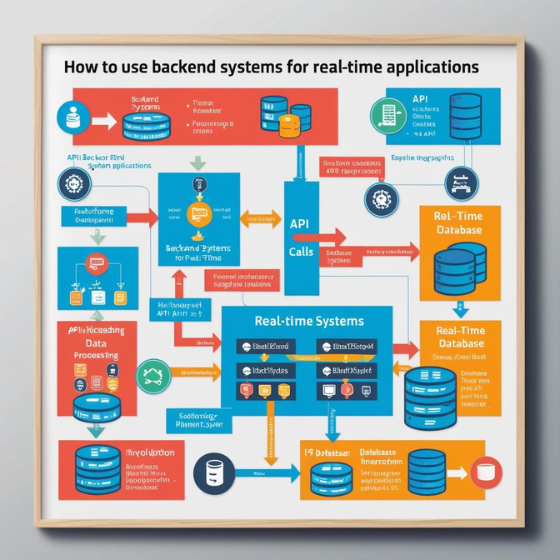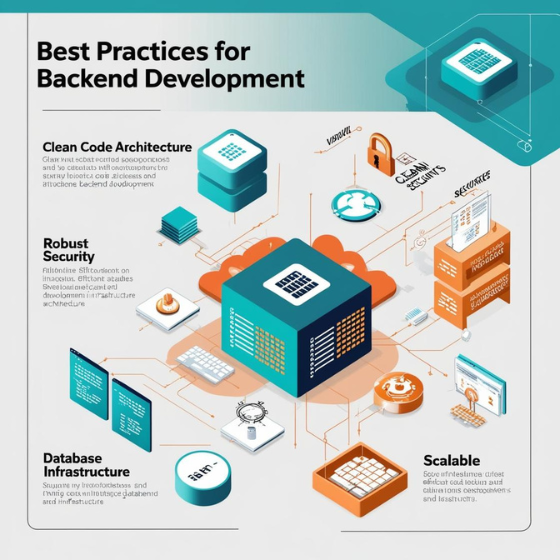Node.js has revolutionized server-side development with its non-blocking, event-driven architecture. Its flexibility and efficiency make it a popular choice for building scalable applications. However, to maximize its capabilities, integrating Node.js with other technologies is often necessary. This blog will guide you through the process of integrating Node.js with various technologies, including databases, front-end frameworks, and cloud services, to create robust and versatile applications.
Integrating Node.js with Databases
Choosing the Right Database
Node.js can work seamlessly with a variety of databases, each suited to different types of applications. The choice between SQL (e.g., MySQL, PostgreSQL) and NoSQL (e.g., MongoDB, Redis) databases depends on your application’s requirements. SQL databases are ideal for structured data with complex queries, while NoSQL databases are better suited for flexible, unstructured data.
Connecting to SQL Databases
For SQL databases, use libraries like node-postgres for PostgreSQL or mysql2 for MySQL. These libraries provide a straightforward way to execute SQL queries and manage connections. Ensure you handle SQL injection risks by using parameterized queries or ORM libraries like Sequelize, which abstract SQL interactions and provide additional security features.
Connecting to NoSQL Databases
For NoSQL databases like MongoDB, the mongoose library offers a powerful ODM (Object Data Modeling) interface. It simplifies data modeling and provides schema validation, making it easier to work with document-oriented databases. Redis, another popular NoSQL database, is often used for caching and session management, and the ioredis library provides robust support for its features.
Integrating Node.js with Front-End Frameworks
Connecting with React
React is a popular front-end library for building user interfaces. To integrate React with Node.js, set up a RESTful API or GraphQL server using Node.js that serves data to your React application. You can use tools like axios or fetch in your React components to make HTTP requests to your Node.js backend. Additionally, create-react-app provides a convenient setup for developing React applications, and you can configure it to work with your Node.js server.
Connecting with Angular
Angular, a powerful front-end framework, can also be integrated with Node.js. Similar to React, you would set up a RESTful API or GraphQL server with Node.js. Angular’s HttpClient module can be used to interact with your Node.js backend. To streamline development, you might use Angular CLI to generate and manage Angular applications, while Node.js handles server-side logic and data processing.
Connecting with Vue.js
Vue.js is another front-end framework that pairs well with Node.js. Integration involves creating a Node.js server that exposes an API for your Vue.js application to consume. Vue’s axios or vue-resource libraries are commonly used for making HTTP requests to your Node.js backend. Vue’s single-file components and reactive data binding make it an excellent choice for building dynamic user interfaces that interact with a Node.js server.
Integrating Node.js with Cloud Services
Using AWS with Node.js
Amazon Web Services (AWS) provides a wide range of cloud services that can be integrated with Node.js applications. Services like AWS Lambda allow you to run serverless functions, and AWS SDK for JavaScript provides APIs for interacting with AWS services. You can use AWS S3 for file storage, DynamoDB for NoSQL databases, and EC2 for scalable compute resources. Integration typically involves configuring the AWS SDK and setting up appropriate IAM roles and permissions.
Using Azure with Node.js
Microsoft Azure offers various cloud services for Node.js applications. Azure App Services enables you to deploy and scale Node.js applications easily, while Azure Functions provides a serverless compute platform. Azure Cosmos DB is a globally distributed NoSQL database that works well with Node.js. Azure’s SDK for JavaScript simplifies integration with these services, allowing you to manage resources, perform database operations, and handle authentication.
Using Google Cloud with Node.js
Google Cloud Platform (GCP) supports Node.js with a range of services like Google Cloud Functions, Google Cloud Storage, and Google Cloud Firestore. The @google-cloud npm packages offer client libraries for interacting with GCP services. Integration involves setting up authentication, configuring your Node.js application to use GCP services, and managing resources through the Google Cloud Console.
Integrating Node.js with Messaging Systems
Using RabbitMQ
RabbitMQ is a message broker that facilitates communication between different components of a distributed system. To integrate RabbitMQ with Node.js, use the amqplib library, which provides an API for connecting to RabbitMQ and managing queues. This setup allows you to implement message queuing patterns for handling asynchronous tasks and improving system scalability.
Using Kafka
Apache Kafka is a distributed streaming platform used for building real-time data pipelines and streaming applications. The kafkajs library is a popular choice for integrating Kafka with Node.js. It provides an easy-to-use API for producing and consuming messages, allowing you to handle large volumes of streaming data and build scalable data processing systems.
Integrating Node.js with Authentication Providers
Using OAuth Providers
OAuth is a popular authorization framework used to grant third-party applications access to user data. To integrate OAuth with Node.js, use libraries like passport and its OAuth strategies. Passport provides a comprehensive authentication middleware that supports various OAuth providers, including Google, Facebook, and GitHub. Implementing OAuth ensures secure and seamless user authentication.
Using JWT for Authentication
JSON Web Tokens (JWT) are commonly used for managing authentication in Node.js applications. Libraries like jsonwebtoken help you create, sign, and verify JWTs. JWTs can be used to authenticate API requests and manage user sessions securely. Integrating JWT involves generating tokens upon user login and validating them on subsequent requests to secure endpoints.
Best Practices for Integration
Ensure Compatibility
When integrating Node.js with other technologies, ensure compatibility between different components. Check version compatibility and library dependencies to avoid conflicts. Regularly update libraries and frameworks to leverage new features and security patches.
Manage Configuration
Centralize configuration settings for integrations to simplify management and deployment. Use environment variables to store configuration details such as API keys and database credentials. This approach helps maintain security and flexibility across different environments (development, staging, production).
Monitor and Test Integrations
Regularly monitor integrated systems for performance and reliability. Implement comprehensive testing strategies to ensure that integrations function as expected and handle edge cases gracefully. Use tools like unit tests, integration tests, and end-to-end tests to validate the integration points.
Conclusion
Integrating Node.js with other technologies can significantly enhance your application’s functionality and performance. Whether connecting with databases, front-end frameworks, cloud services, messaging systems, or authentication providers, following best practices and ensuring compatibility will lead to successful and efficient integrations. By leveraging Node.js’s flexibility and ecosystem, you can build powerful applications that meet diverse requirements and scale effectively.







